
Parade of Lights Upstaged by Fire
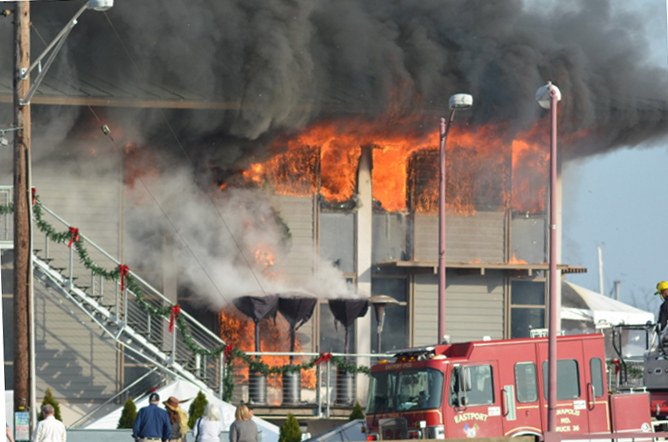
©2015Latitude 38 Media, LLC
One of the most prestigious yacht clubs on the East Coast is closed this week in the aftermath of a devastating three-alarm fire Sunday afternoon that took 90 firefighters to extinguish. The Annapolis YC traces its roots back to 1886 — only 21 years after the Civil War ended. Its current clubhouse, which may be a total loss due to the three-alarm fire — dates back to 1963, and reportedly did not have a fire sprinkler system.
The cause of the blaze, which originated somewhere inside the waterfront building about 2:15 p.m. Sunday, has not yet been determined. Although the fire was devastating, the silver lining is that none of the 2,000 club members were inside at the time, and all staff got out safely. At the time, they were preparing for that evening’s lighted boat parade, which was eventually canceled. Amazingly, no boats were engulfed by the blaze.
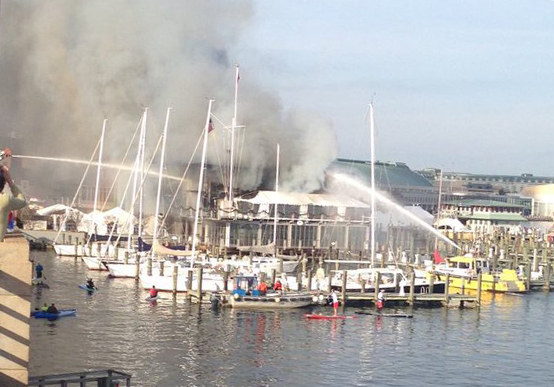
It’s too soon to tell if the historic building can be rebuilt at its current location, adjacent to Spa Creek, or must be moved to a new site. The latter seems likely based on comments from Commodore Ron Jabin. "Our plans include, first and foremost, to try and find a suitable location to relocate the Annapolis Yacht Club and fly our flag from." Both Maryland Governor Larry Hogan and Annapolis Mayor Mike Pantelides have vowed to fast-track construction of a new club, including expediting permits. During the interim, the club has vowed to financially support its 150 employees.
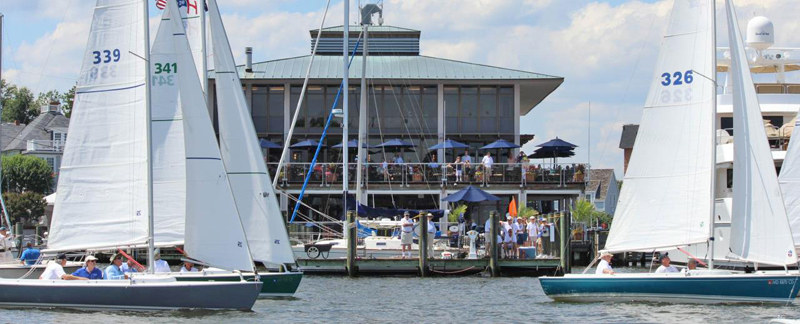
For Annapolis sailors, perhaps the saddest news is that countless trophies, oil paintings, ship models, racing records, and other irreplaceable artifacts and memorabilia have been lost.
Aboard boats, a fire is one of the worst possible tragedies. And a shoreside inferno is not much better. So even though Annapolis is far from our usual West Coast ‘beat’, it should serve as a reminder for us all to install and check the viability of fire safety devices, and have an evacuation plan.
PHOTO
Gemstones in the Bilge
We don’t usually get excited about things we find in the bilge. But during a haulout last summer we were astonished to discover a trove of ‘sparkling gemstones’ beneath the floorboards of our trimaran. Okay, so they turned out to be only salt crystals, but we were fascinated by their presence there nonetheless.
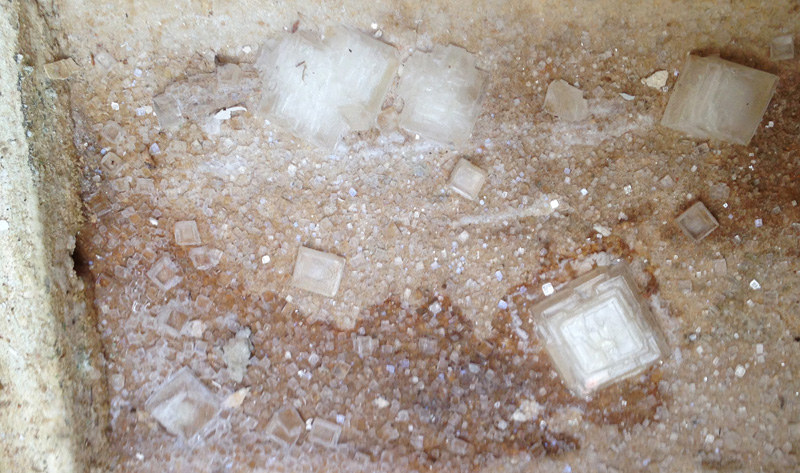
©Latitude 38 Media, LLC
Evidently there’d been an ever-so-slight seepage of sea water around two throughhull fastenings attached to a no-longer-used SSB ground plate. Over time, the water had evaporated away, leaving only the salt (sodium chloride), which eventually formed into perfectly square crystals, some of which were more than an inch across. Finding them was definitely the highlight of that day’s boatwork, even though we were a bit horrified to learn that our boat had been taking on water, albeit a miniscule amount, without our knowing about it.
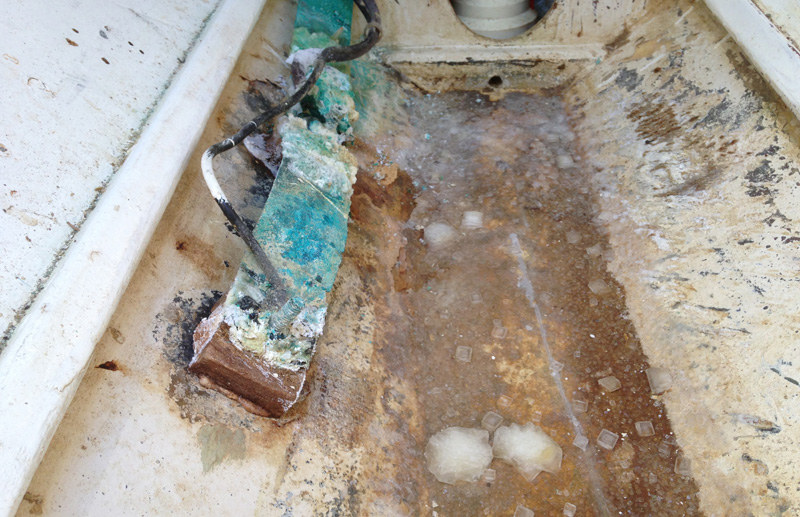
©Latitude 38 Media, LLC
If there are any scientists reading this, we’d love to know why salt crystals form into perfect squares, as compared to the more irregular form of other crystals, and why some grow so large, while others remain tiny. Please email us here with your insights.
Temporal Dysphoria in the Jules Verne
On Friday, we told the story of Francis Joyon’s IDEC Sport maxi trimaran setting a record for the Indian Ocean crossing from from Cape Agulhas in South Africa to Cape Leeuwin in southwest Australia. Over the weekend, the larger Spindrift 2 also set an Indian Ocean record. Both teams are simultaneously attempting to break the Jules Verne Trophy circumnavigation record.
By crossing the longitude of South East Cape, the southernmost tip of Tasmania, at 8:39 GMT on Saturday, December 12, the 130-ft Spindrift 2 set a new best time for crossing the Indian Ocean from Cape Agulhas to Tasmania of 8 days 4 hours and 35 minutes, but more importantly for the passage between the start at Ushant and the entrance of the Pacific: 20 days, 4 hours and 37 minutes, which is 2 hours and 34 minutes better than the current holder of the Jules Verne Trophy, Loïck Peyron.
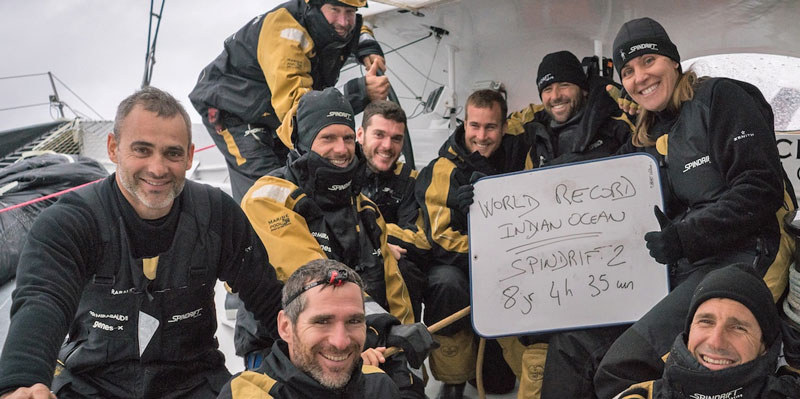
©Latitude 38 Media, LLC
"Don’t ask me what time it is," said Swiss helmswoman Dona Bertarelli yesterday. "I’ve got no idea. I don’t even know whether it’s morning, afternoon or evening. On board we use UTC, also known as GMT. Does that help? Not really — it makes it all the more confusing! Just to give you an idea, daybreak is at 6:30 p.m. and nightfall at 1 p.m. But it gets worse. Lunch is at 4 in the morning, and our evening meal is at midday! That should give you an idea of the chaos, but there’s more — all these times shift by an an hour and a half every day.
"So I just eat when I’m told to eat, without asking too many questions, but when I woke up this morning I didn’t really enjoy having paella for breakfast. Things will get even more complicated over the next two days, when we’ll go through the same day twice. Just after New Zealand we’ll cross the International Date Line, so one minute it will be midnight on December 15th, and the next it will be midnight on December 14th. It’s crazy, but that’s how Phileas Fogg, thinking he’d lost his bet, discovered that actually he had successfully travelled around the world in 80 days."
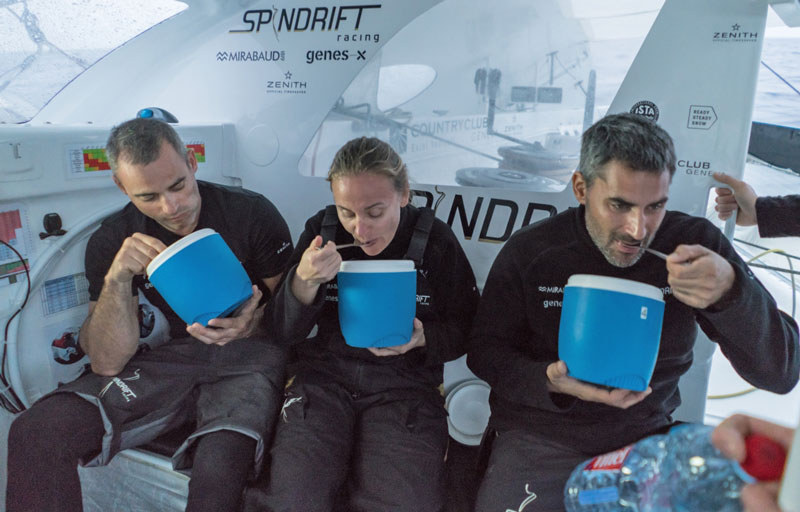
©2015Latitude 38 Media, LLC
Eating and cooking on Spindrift 2 requires great coordination: In the Southern Ocean it takes 50 minutes to heat up six liters of water and then 45 minutes for rehydration of dehydrated meals, which comes to about one and a half hours of preparation.
Spindrift 2 is now on the return journey having crossed the International Date Line today, literally on the other side of the world from the start of the circumnavigation. So Bertarelli, skipper Yann Guichard, and their crew are now enjoying their second 14th of December.
IDEC Sport also crossed the International Date Line today, re-entering the Western Hemisphere in dense mist, while still traveling at more than 30 knots.
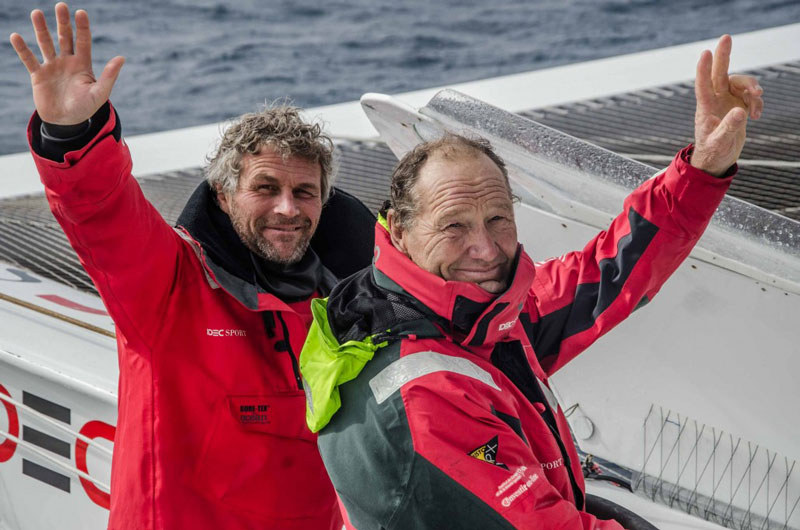
©2015Latitude 38 Media, LLC
Update: To view all three boats (Spindrift 2, IDEC Sport, and the record holder, Banque Populaire V) on one tracker, see volodiaja.net/Tracking.
